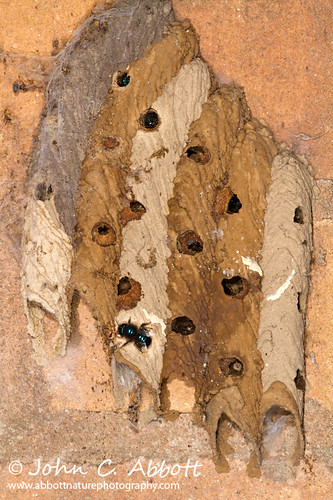
Blueberry females then visit flowers like redbuds to gather pollen and nectar. They make many trips to complete a pollen/nectar provision mass for their larva.
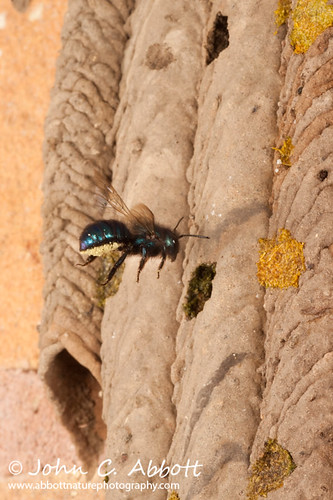
Once a provision mass is complete, she will back into the hole and lays an egg on top of the pollen. She then creates a partition of "mud", which also serves as the back of the next cell.
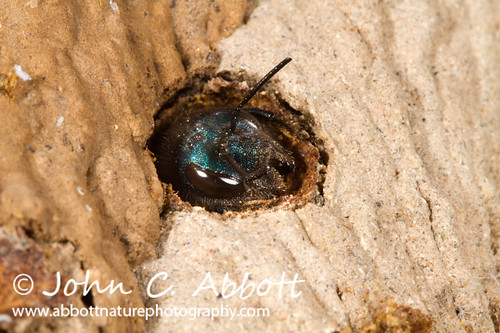
This process continues until she has filled the cavity. Female-destined eggs are laid in the back of the nest, and male eggs towards the front.
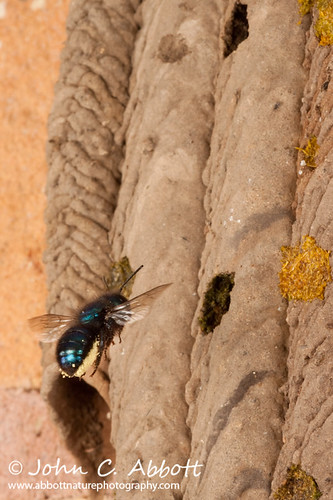
Once she finishes with the nest, she plugs the entrance to the tube.
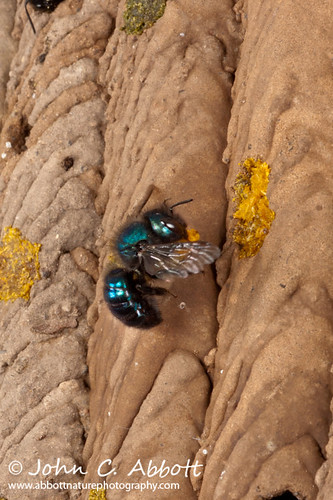
They may end up with several completed nest holes before they are done.
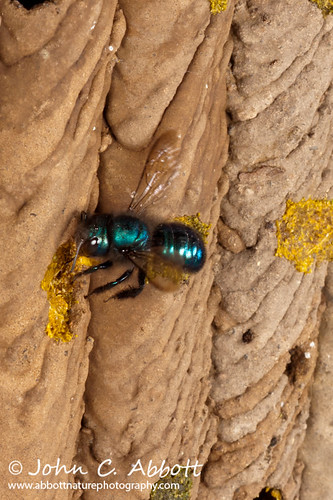
A group of wasps in the family Sapygidae (no official common name, but sometimes referred to as Club-horned Wasps) are also actively flying at this time looking to parasitize the blueberry bees.
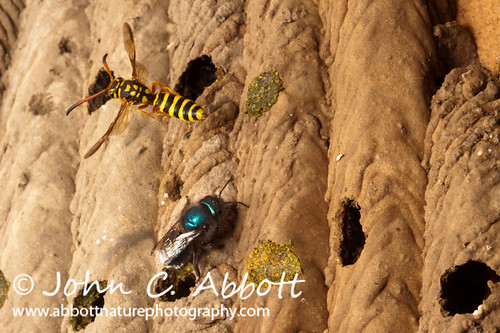
By the summer, the blueberry bee larva (if unparasitized) has consumed all of its provisions and pupates. The adult matures in the fall inside its cocoon and doesn't emerge until the following spring when the whole process starts over.


No comments:
Post a Comment